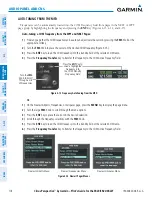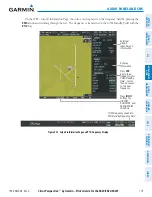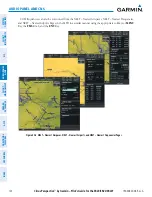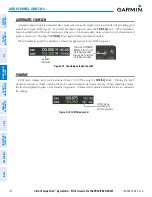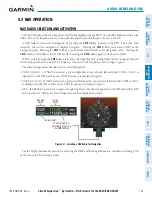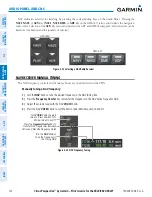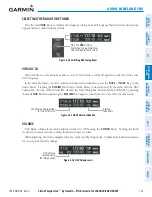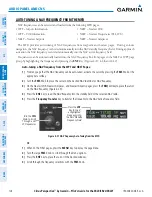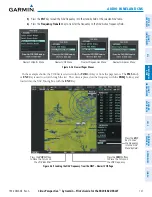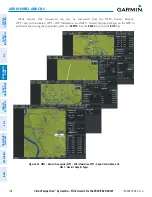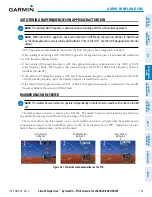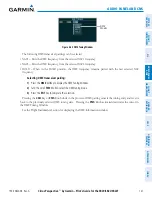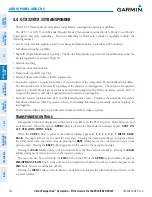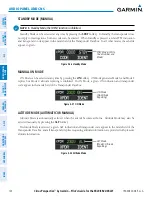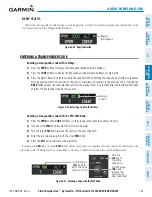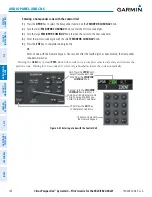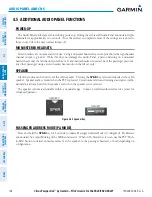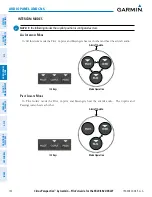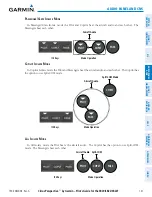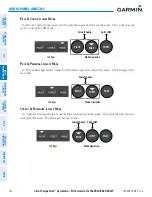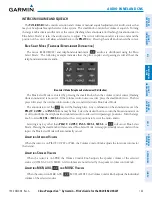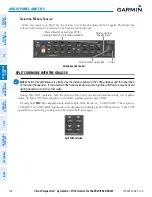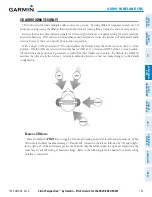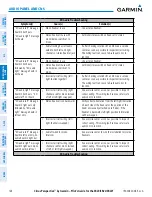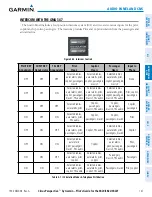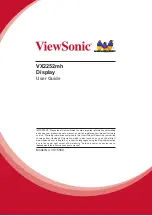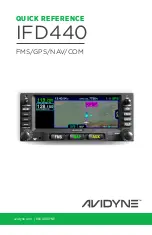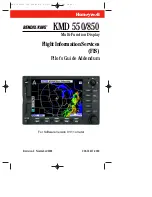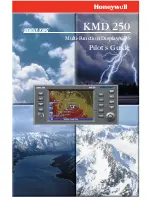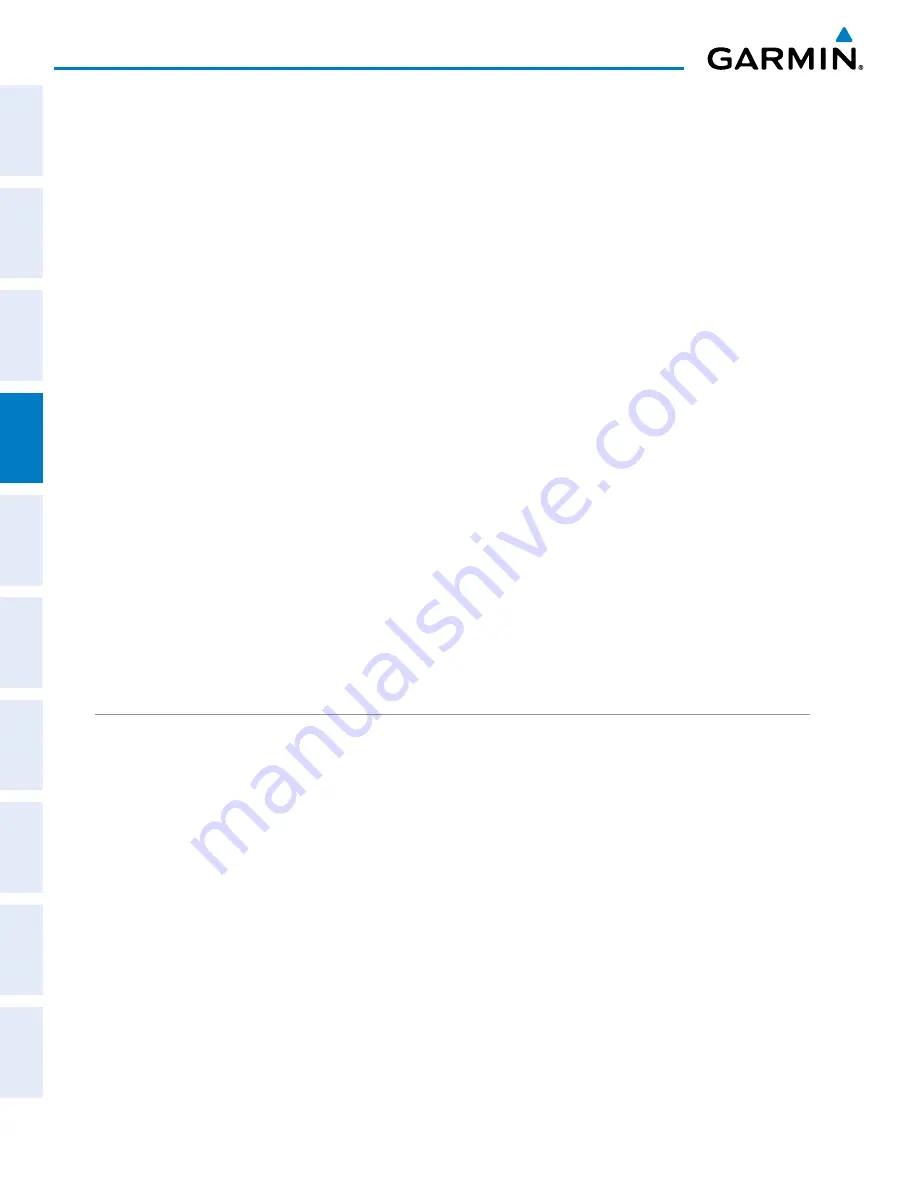
190-00820-08 Rev. A
Cirrus Perspective
™
by Garmin – Pilot’s Guide for the SR20/SR22/SR22T
132
AUDIO PANEL AND CNS
SY
STEM
O
VER
VIEW
FLIGHT
INSTRUMENTS
EIS
AUDIO P
ANEL
& CNS
FLIGHT
MANA
GEMENT
HAZARD
AV
OID
ANCE
AFCS
ADDITIONAL FEA
TURES
APPENDICES
INDEX
4.4 GTX 32/GTX 33 TRANSPONDER
The GTX 32 Transponder provides Mode A and Mode C interrogation and reply capabilities.
The
GTX 33 or GTX 33 with Extended Squitter Mode S Transponder provides Mode A, Mode C, and
Mode S
interrogation and reply capabilities. Selective addressing or Mode Select (Mode S) capability includes the
following features:
• Level-2 reply data link capability (used to exchange information between aircraft and ATC facilities)
• Surveillance identifier capability
• Flight ID (Flight Identification) reporting – The Mode S Transponder reports aircraft identification as either the
aircraft registration or a unique Flight ID.
• Altitude reporting
• Airborne status determination
• Transponder capability reporting
• Mode S Enhanced Surveillance (EHS) requirements
• Acquisition squitter – Acquisition squitter, or short squitter, is the transponder 24-bit identification address.
The transmission is sent periodically, regardless of the presence of interrogations. The purpose of acquisition
squitter is to enable Mode S ground stations and aircraft equipped with a Traffic Avoidance System (TAS) to
recognize the presence of Mode S-equipped aircraft for selective interrogation.
• Extended squitter (optional with GTX 33 w/Extended Squitter only) – Transmits the Automatic Dependent
Surveillance-Broadcast (ADS-B) position, velocity, and heading information periodically without requiring an
interrogation.
The Hazard Avoidance Section provides more details on traffic avoidance systems.
TRANSPONDER CONTROLS
Transponder function is displayed on three levels of softkeys on the PFD: Top-level, Mode Selection, and
Code Selection. When the top-level
XPDR
Softkey is pressed, the Mode Selection softkeys appear:
STBY
,
ON
,
ALT
,
VFR
,
CODE
,
IDENT
,
BACK
.
When the
CODE
Softkey is pressed, the number softkeys appear:
0
,
1
,
2
,
3
,
4
,
5
,
6
,
7
,
IDENT
,
BKSP
,
BACK
. The digits
8
and
9
are not used for code entry. Pressing the numbered softkeys in sequence enters
the transponder code. If an error is made, pressing the
BKSP
Softkey moves the code selection cursor to the
previous digit. Pressing the
BKSP
Softkey again moves the cursor to the next previous digit.
Pressing the
BACK
Softkey during code selection reverts to the Mode Selection Softkeys. Pressing the
BACK
Softkey during mode selection reverts to the top-level softkeys.
The code can also be entered with the
FMS
Knob on the PFD or the
XPDR
Key and numeric keypad or
FMS/XPDR NAV/COM
Knob. Code entry must be completed with either the softkeys, numeric keypad, or the
FMS
Knob, but not a combination of both.
Pressing the
IDENT
Softkey while in Mode or Code Selection initiates the ident function and reverts to the
top-level softkeys.
Summary of Contents for Cirrus Perspective SR20
Page 1: ... Cirrus SR20 SR22 SR22T Integrated Avionics System Pilot s Guide ...
Page 2: ......
Page 655: ......

